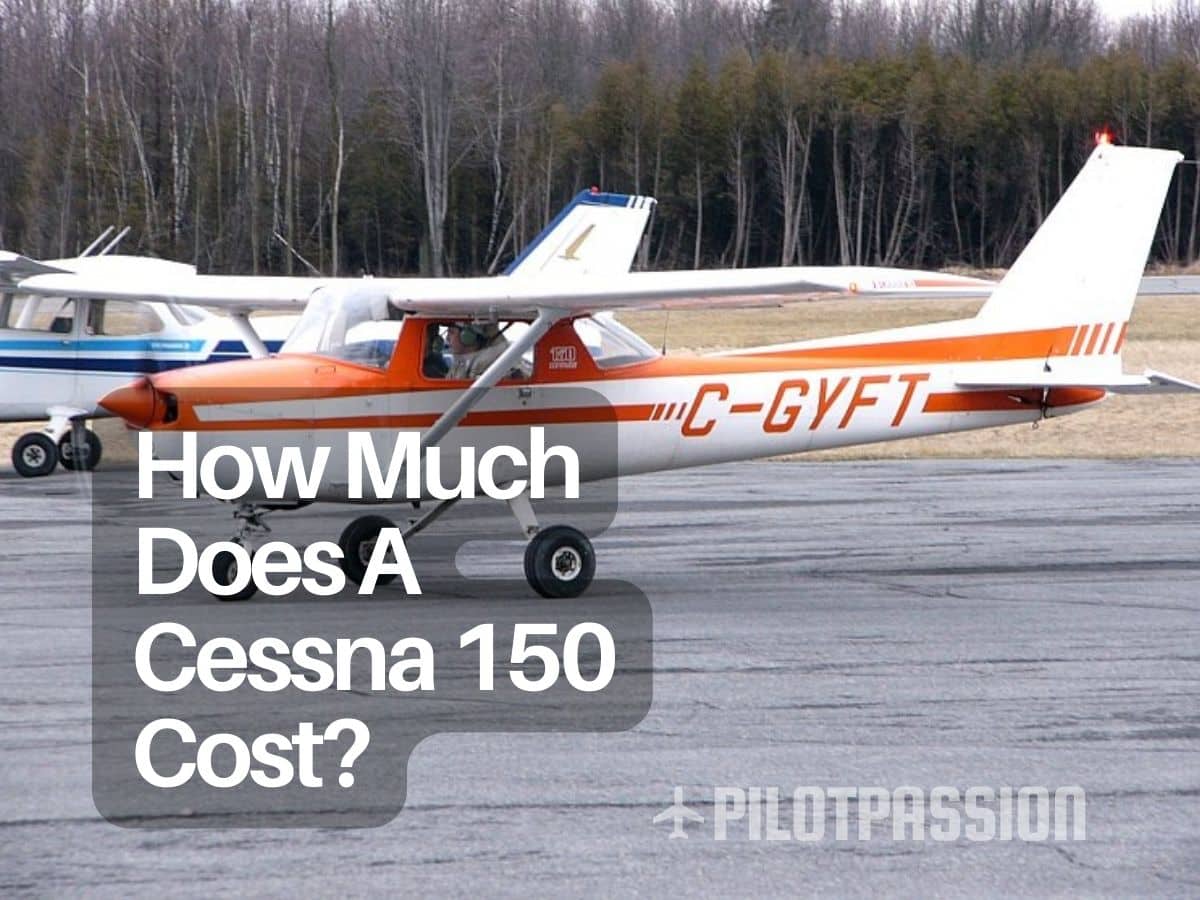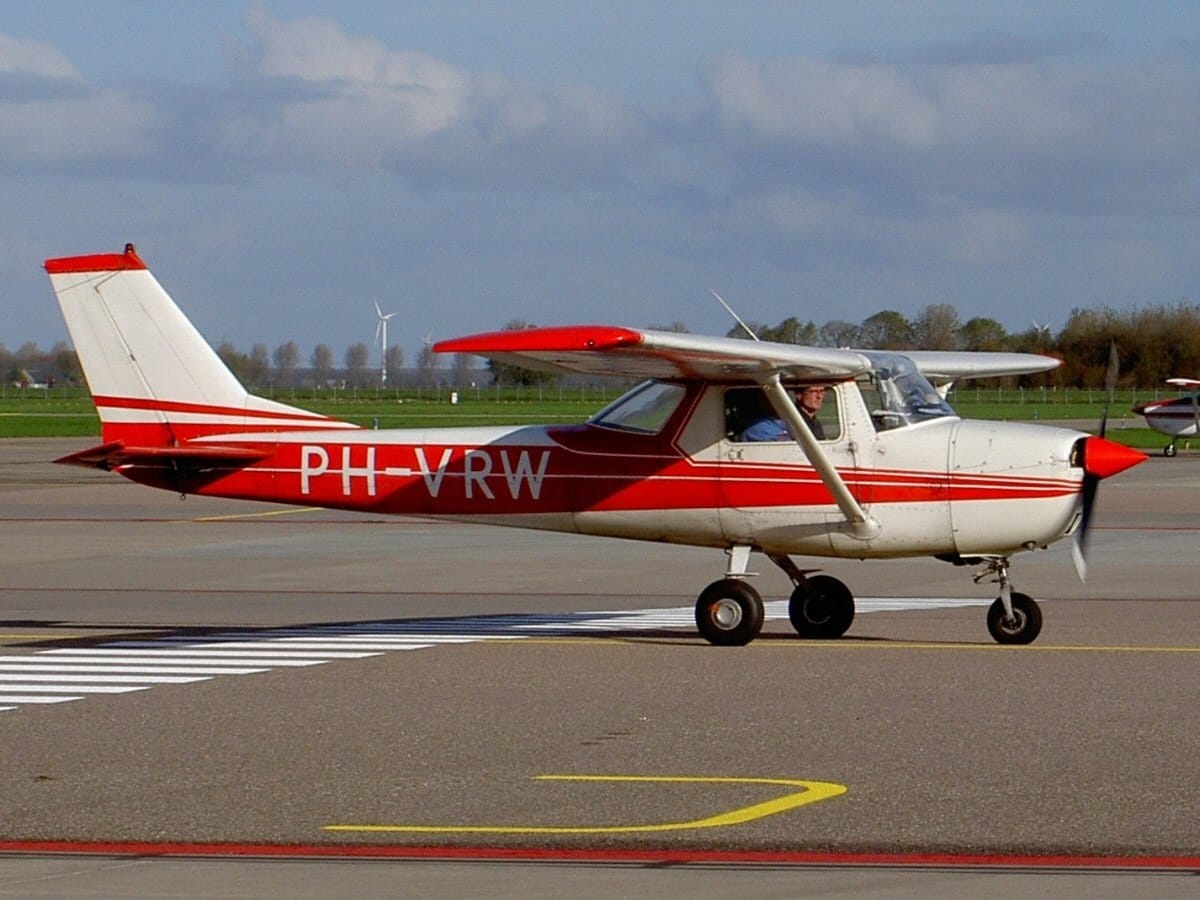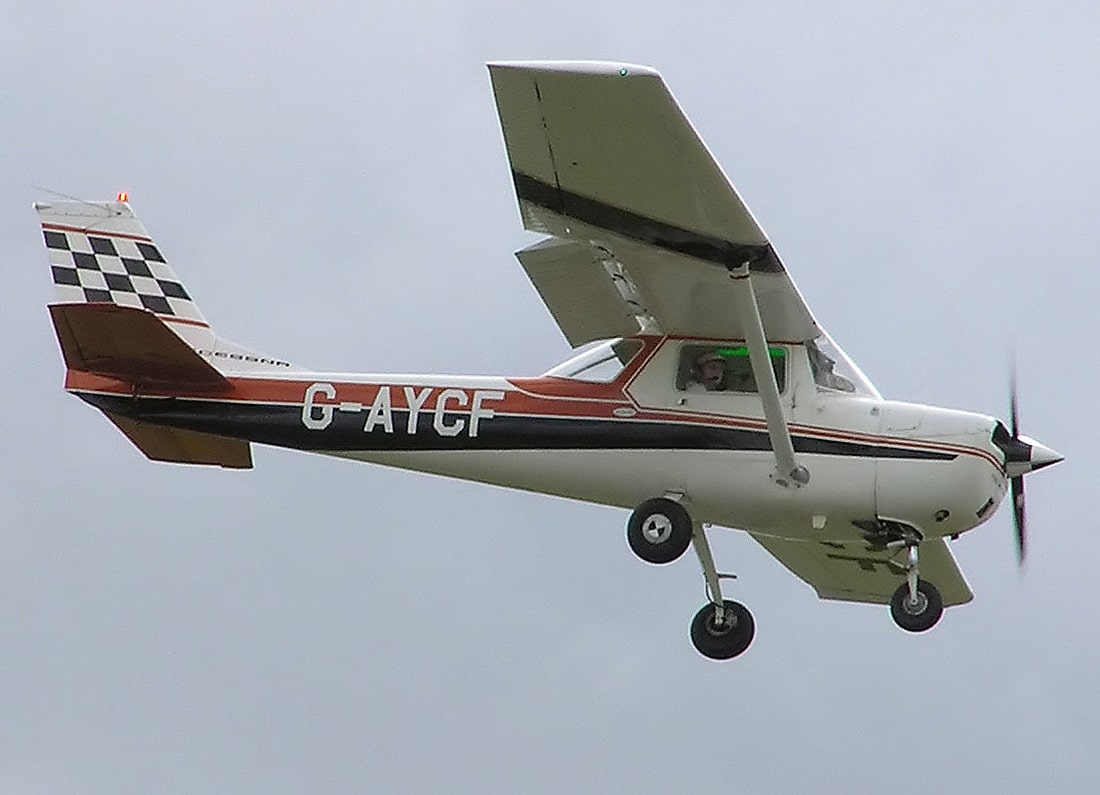The Cessna 150 stands as an emblem of single-engine, piston-powered aircraft, renowned for its role as one of the most favored training planes globally. Intrigued by the financial aspects of owning and operating a Cessna 150, I delved into the current market to uncover the costs associated with these planes.
In 2024, the market price for a used Cessna 150, which was produced from 1964 to 1976, ranges from $34,000 to $89,900. Beyond the purchase price, the yearly ownership costs—covering insurance, maintenance, and hangar fees, yet excluding depreciation—average around $9,675. For pilots flying about 100 hours annually, the variable operating cost comes to approximately $35 per hour.

At PilotPassion, our mission is to provide you with the most interesting and relevant aviation content. As aviation enthusiasts and student private pilots, we strive to deliver accurate and helpful information to save you time and energy when researching the costs associated with owning and operating a Cessna 150.
Table of Contents
Why the Cessna 150 is a Fantastic Aircraft
The Cessna 150 is often a top choice for newly certified private pilots, thanks to its affordable price, fuel efficiency, and easy handling. Its reputation as a reliable and user-friendly aircraft makes it an appealing option for aspiring aviators. Thousands of pilots worldwide have learned how to fly in this plane.
The Cessna 150 is a versatile aircraft that can accommodate up to two passengers, including the pilot. In this article, we will discuss the total cost of ownership and explore various financing options for owning a Cessna 150.
Cost of Purchasing a Cessna 150
A well-maintained used Cessna 150 can be found within the price range of $34,000 to $89,900 for models manufactured between 1964 and 1976.
The Cessna 150 is a highly sought-after aircraft due to its impressive legacy and enduring popularity. With its initial launch in 1958, these aircraft are readily available on the market.
Prices for a Cessna 150 can vary widely, depending on factors such as its condition, age, and location. However, you can expect to find a decent quality Cessna 150 for approximately $34,000. Keep in mind that these aircraft tend to sell quickly once they are listed for sale.
Let us help you in finding your dream small plane with our expert recommendations.

Ownership Costs of a Cessna 150
Purchasing a Cessna 150 is just the beginning of your financial commitment. Following your acquisition, be prepared to incur both fixed and variable running costs. On average, the total cost of ownership amounts to $9,675 annually. This includes approximately $3,375 in fixed costs and around $6,300 in variable costs, assuming 100 hours of annual flying time.
Depreciation costs are also a factor in overall ownership expenses. However, estimating depreciation is challenging due to the numerous variables at play.
Owning an airplane, such as a Cessna 150, entails various fixed and variable costs that beginners may not be aware of. This applies to all types of aircraft. If you’re purchasing a new or used Cessna outright, you won’t need to worry about financing costs. If you’re securing a loan to finance the acquisition, you’ll need to account for the interest repayment expenses.
What Are the Fixed Costs for Cessna 150 Ownership?
Fixed costs of aircraft ownership can be defined as expenses that must be paid regardless of whether the aircraft is flown or not.
Even if your Cessna 150 remains grounded, there are still fixed costs to cover, such as the one-time purchase price, hangar fees at the aerodrome, insurance costs, and annual inspection expenses. Total fixed costs amount to approximately $3,375.
It’s also essential to consider the depreciation of your aircraft’s value as an asset. The depreciation rate depends on various factors, such as the plane’s age, cost, potential resale value, and market conditions. While we can’t provide an exact number for depreciation, it’s crucial to be mindful of this aspect.
To ensure your aircraft passes its annual inspection, you’ll likely need to pay for required maintenance. Some people might categorize these maintenance expenses as variable costs, but we consider them fixed costs since they must be paid regardless of the aircraft’s usage.
Regular subscriptions for services like weather updates or ForeFlight should be factored into the fixed costs.
Hangar Costs for a Cessna 150
The cost of hangar space for a Cessna 150 can vary significantly depending on location and the type of storage facility you choose to rent from.
In the United States, hangar rentals can start as low as $70 per month, but you might prefer to pay more for additional amenities and security. Alternatively, you may also have the option to build or purchase your own hangar.
How much does insurance cost for a Cessna 150?
Insurance costs for owning and operating a Cessna 150 can be more affordable than you might expect. Similar to hangar costs, insurance rates can differ greatly based on factors such as location, frequency of flights, the value of the aircraft, and the type of coverage you choose.
Insurance pricing for aircraft can significantly vary due to numerous factors. To find lower rates, it’s recommended that you shop around and compare quotes. Keep in mind that lower rates typically only provide liability coverage, which doesn’t include damage or loss to the aircraft itself but covers damage or injury to third parties.
The primary factor determining the cost of insuring a Cessna 150 is the airplane’s valuation. For a used Cessna 150, the approximate insurance cost is $800 per year.
How much is an annual inspection for a Cessna 150?
The Federal Aviation Administration (FAA) mandates that an aircraft undergoes an annual inspection each year. This inspection costs approximately $850.
In addition to the annual inspection, you should really ensure that all parts are in proper working order and that essential fluids, such as oil, remain topped up as needed. Considering these requirements, the fixed maintenance costs, including the annual inspection, may amount to around $3,375 per year.
What Are the Variable Costs for Cessna 150 Ownership?
Owning a Cessna 150 comes with various variable costs, including fuel, oil, unscheduled maintenance, and miscellaneous expenses such as landing fees, parking, and minor travel costs.
On average, these costs amount to approximately $6,300 per year. The variable cost per flight hour is around $63. It is essential to note that these figures are mere estimates, as individual experiences may differ when it comes to maintaining a Cessna 150.
Generally, the longer you own the aircraft, the more likely the annual variable costs will increase. Unlike fixed costs, variable costs are only incurred when the plane is in operation.
Cessna 150 Fuel Costs
The Cessna 150 relies on avgas for its fuel, with an approximate cost of $35 for each hour of flight. At present, avgas is priced around $5 per gallon, and the aircraft consumes roughly 6.5 gallons per hour. It’s wise to compare avgas prices at various airports, as the rates can fluctuate based on their location and level of activity.
Cessna 150 Oil
For those with technical aptitude, performing oil changes on the Cessna 150 can result in significant savings on labor expenses. Otherwise, you’ll be responsible for covering the costs of labor, oil, and filters. I have calculated that the oil expense for a Cessna 150 typically amounts to approximately $3 per running hour.
Cessna 150 Engine Maintenance Costs
Every 2,000 hours, or as needed, the engine of a Cessna 150 requires an overhaul. The expenses associated with overhauling an airplane engine can escalate rapidly, depending on factors such as the engine’s condition, age, and the wear and tear it has endured.
Prioritizing safety is essential, making this a critical maintenance task. During the overhaul, the engine is disassembled and each component, including pistons, bearings, and cylinders, is thoroughly inspected to ensure optimal performance and safety.
Maintenance procedures, such as repairs and replacements, are performed as needed. As an aircraft engine accumulates more flight hours, the frequency of complete overhauls increases.
Now that we’ve addressed both fixed and variable costs, let’s explore how to make owning a Cessna 150 affordable!

Financing Options for Purchasing a Cessna 150
From personal experience with friends who own a Cessna 150, several financing alternatives are available for purchasing this type of aircraft. One option is to secure a loan from a bank or financial institution.
Alternatively, leasing the aircraft allows for its use over a specified period, after which you can either return it or purchase it at the end of the lease term. Consider buying a shared ownership stake in a Cessna 150 alongside a trusted, small group of people.
Whichever method you choose to purchase a Cessna 150, ensure that you thoroughly read and comprehend all the terms and conditions before signing any documents. It’s crucial to understand the complete terms and potential costs you may be responsible for.
Taking out a loan for a Cessna 150
One option to finance your Cessna 150 is applying for a conventional loan from a bank or credit union. If you have an excellent credit score and a strong financial history, this could be an intelligent decision.
Another alternative is applying for a loan specifically designed for aircraft financing. These loans often provide more lenient terms and may be more willing to work with individuals with less-than-perfect credit.
Practical advice: Prior to selecting a lender, it’s always advisable to research and compare rates and terms from multiple sources. Carefully assess your financial situation to ensure that you can comfortably manage the loan payments.
Leasing
For those hesitant to commit to purchasing an aircraft outright, leasing a Cessna 150 provides a straightforward and cost-effective financing alternative.
When leasing a plane, you agree to use it for a predetermined period—usually spanning multiple years—in exchange for a fixed monthly fee. At the end of the lease, you can either return the aircraft to the owner or potentially purchase it for a predetermined price.
Two types of leases are available: wet leases (which include a pilot) and dry leases (featuring only the plane). The dry lease option is typically the more popular choice.
It’s crucial to thoroughly research and compare leasing options from various providers. Be prepared for extensive paperwork in lease agreements, and always read the fine print. Similar to loans, it’s essential to consider your ability to make payments for the full duration of the lease.
Buying a Share in a Cessna 150
Purchasing a share in a Cessna 150 through fractional ownership is a cost-effective way to enjoy the benefits of aircraft ownership without the full expense.
This model involves an initial investment and shared ongoing costs for maintenance and operations, often facilitated by flying clubs.
It’s an ideal solution for individuals or businesses seeking affordable access to flying for personal or professional use, allowing co-owners to split both purchase and operational expenses according to their ownership share.
Cessna 150 Specifications
Manufacturer: Cessna Aircraft Company Model: Cessna 150 First flight: September 12, 1957 Production years: 1958-1977 Role: Light, single-engine piston aircraft, primary trainer Seating capacity: 2 passengers (including pilot) Engine: 1 x Continental O-200-A air-cooled, horizontally-opposed piston engine Horsepower: 100 hp (75 kW) Wingspan: 33 ft 4 in (10.16 m) Length: 23 ft 9 in (7.24 m) Height: 8 ft 6 in (2.59 m) Maximum speed: 126 mph (203 km/h) Cruise speed: 110 mph (177 km/h) Range: 420 miles (676 km) Service ceiling: 14,000 ft (4,267 m) Rate of climb: 670 ft/min (3.4 m/s) Wing loading: 10.8 lb/ft² (52.7 kg/m²) Power/mass: 0.10 hp/lb (0.17 kW/kg) Fixed tricycle landing gear configuration Known for: Simplicity, ease of operation, and its role as a popular flight training aircraft
Final Thoughts
Owning a Cessna 150, like any aircraft, involves considerable costs, but for many, the joy of flying makes it worth the investment.
Compared to other planes, the Cessna 150 is relatively economical to operate, with total hourly costs averaging $96, including both fixed and variable expenses such as fuel, oil, and maintenance, which account for about $63 per hour.
For those deterred by the high costs of ownership, renting a Cessna 150 presents a more budget-friendly option, especially for newly-certified pilots.
This overview aims to shed light on the financial aspects of Cessna 150 ownership, helping aspiring owners and pilots make informed decisions. Happy flying!